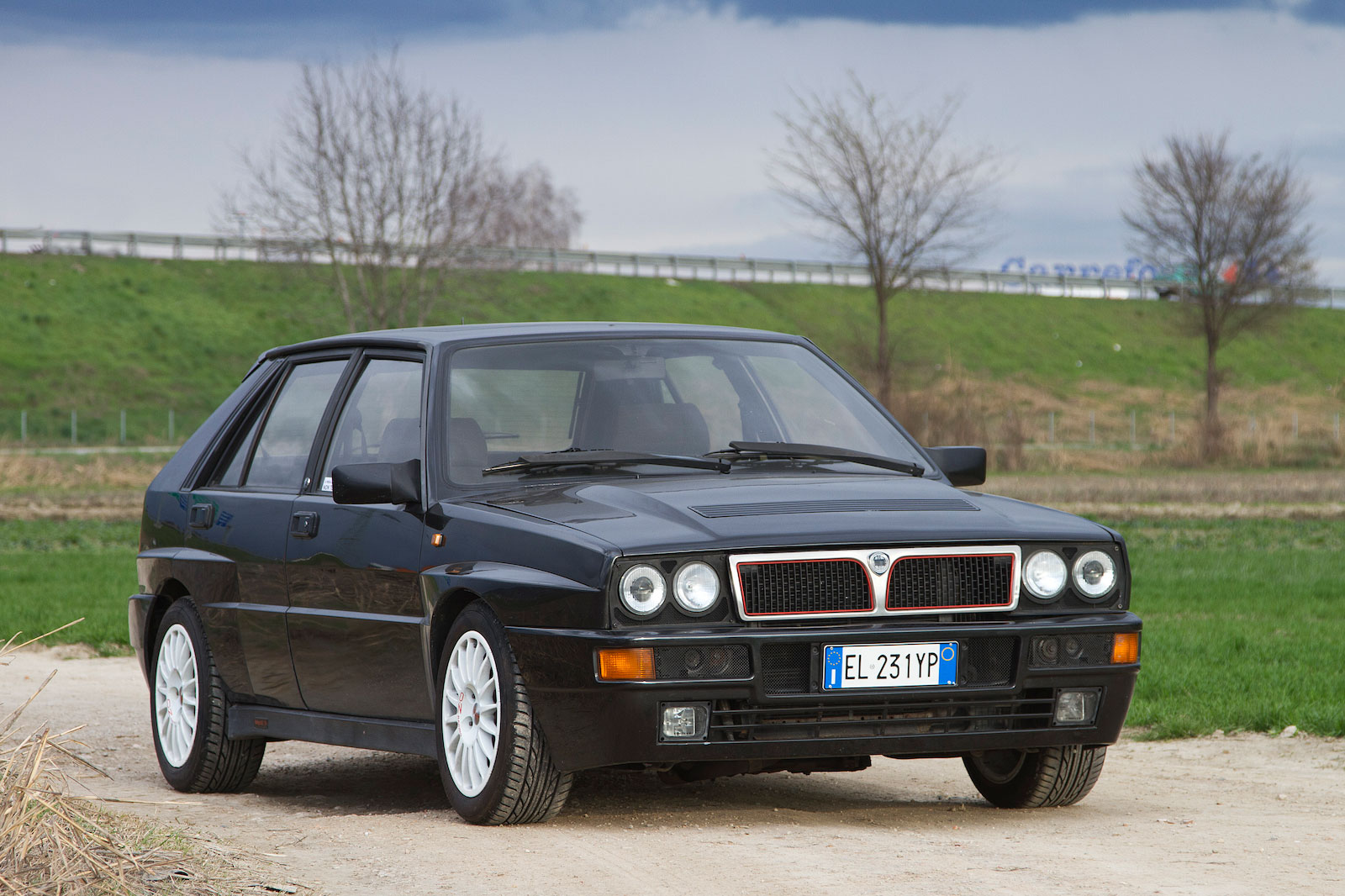Your definitive Lancia Delta HF Integrale buyer’s guide
Marque History
Lancia is one of Italy’s oldest and most respected car manufacturers. Founded in 1906 by Vincenzo Lancia, a former racing car driver, its cars became known for innovative engineering and excellent road-holding. Typically not the fastest or sexiest cars available, they represented a quality offering in the middle of the market. That worked well up through the 1950s, after which mass production techniques became more widespread in the Italian car industry. Lancia was unable to adapt or compromise on its quality, and it was ultimately acquired by Fiat in 1969.
That was not the end of the story, however. In 1963, the privateer team HF (High Fidelity) Squadra Corse had started rallying the Lancia Fulvia. Its V-4 engine and front-wheel-drive configuration gave it solid road-holding. In 1965, having switched to the new Fulvia coupe, the team’s success was recognized when Lancia turned HF into the factory team. The Fulvia won the predecessor of the World Rally Championship in 1972. By this time, the next great Lancia rally car was already being tested: the wild mid-engine Stratos.
The Stratos featured a Ferrari Dino V-6 of 2.4 liters and a lightweight fiberglass body designed by Marcello Gandini at Bertone. The Stratos won the newly established World Rally Championship three times in 1974, 1975 and 1976. After the Stratos was retired from factory rallying, it wasn’t until 1983 with the rear-drive, inline-four supercharged, mid-engine 037 that Lancia again took home the championship.
Group B begets Group A
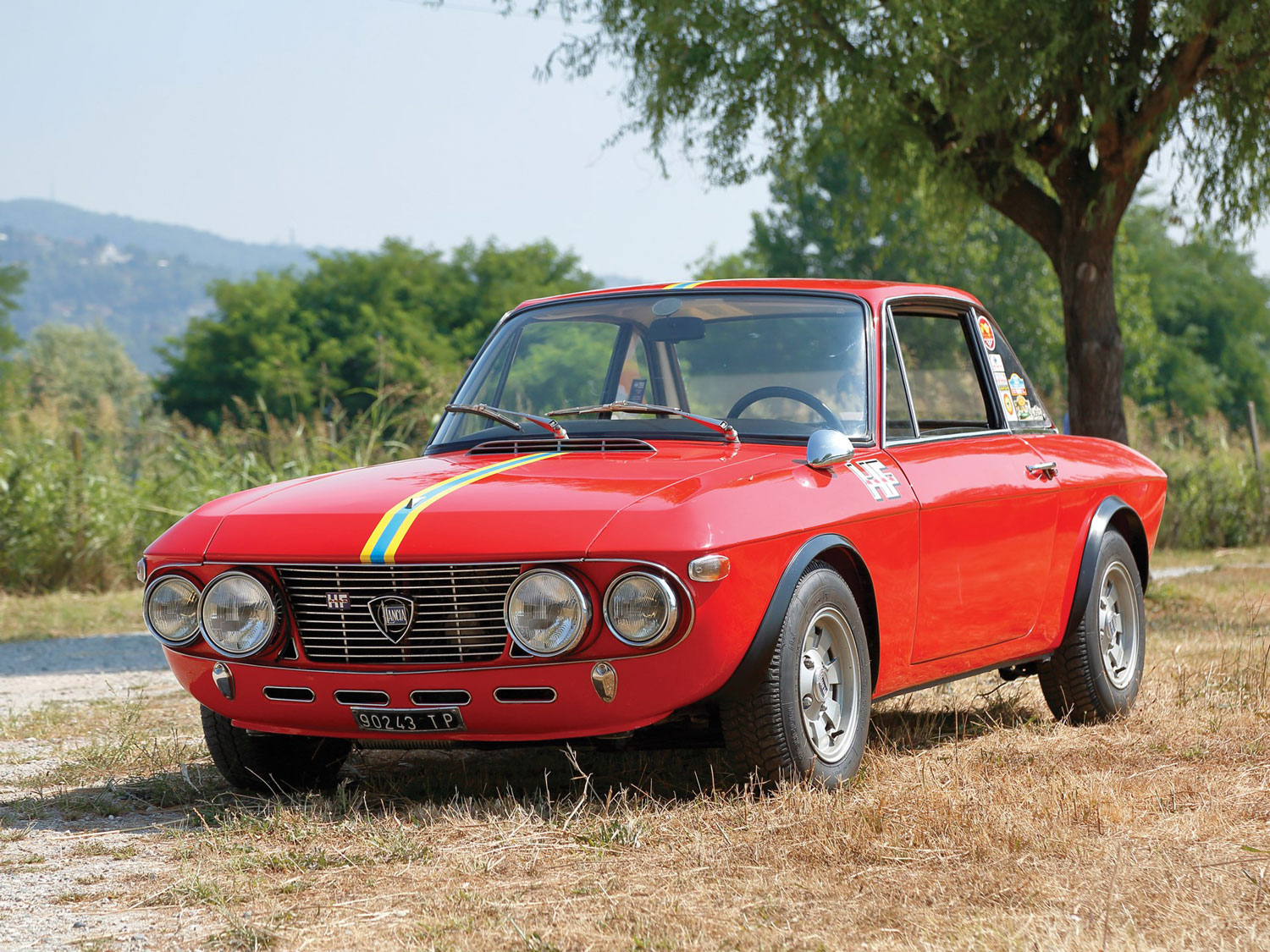
As all-wheel drive began to dominate Group B rallying, the 037 was the last rear-wheel drive car to win the championship. Lancia’s new entry to counter the Audi Sport Quattro and Peugeot 205 Turbo 16 was the radical mid-engine, supercharged and turbocharged Delta S4. Sadly, the Group B era came to a tragic end in 1986 when Henri Toivonen and his co-driver Sergio Cresto died while driving a Delta S4 in the Tour de Corse.
As manufacturers scrambled to find replacements suitable for the new Group A regulations, Lancia found it already had a promising car in its showrooms: the Delta HF4WD.
The Delta
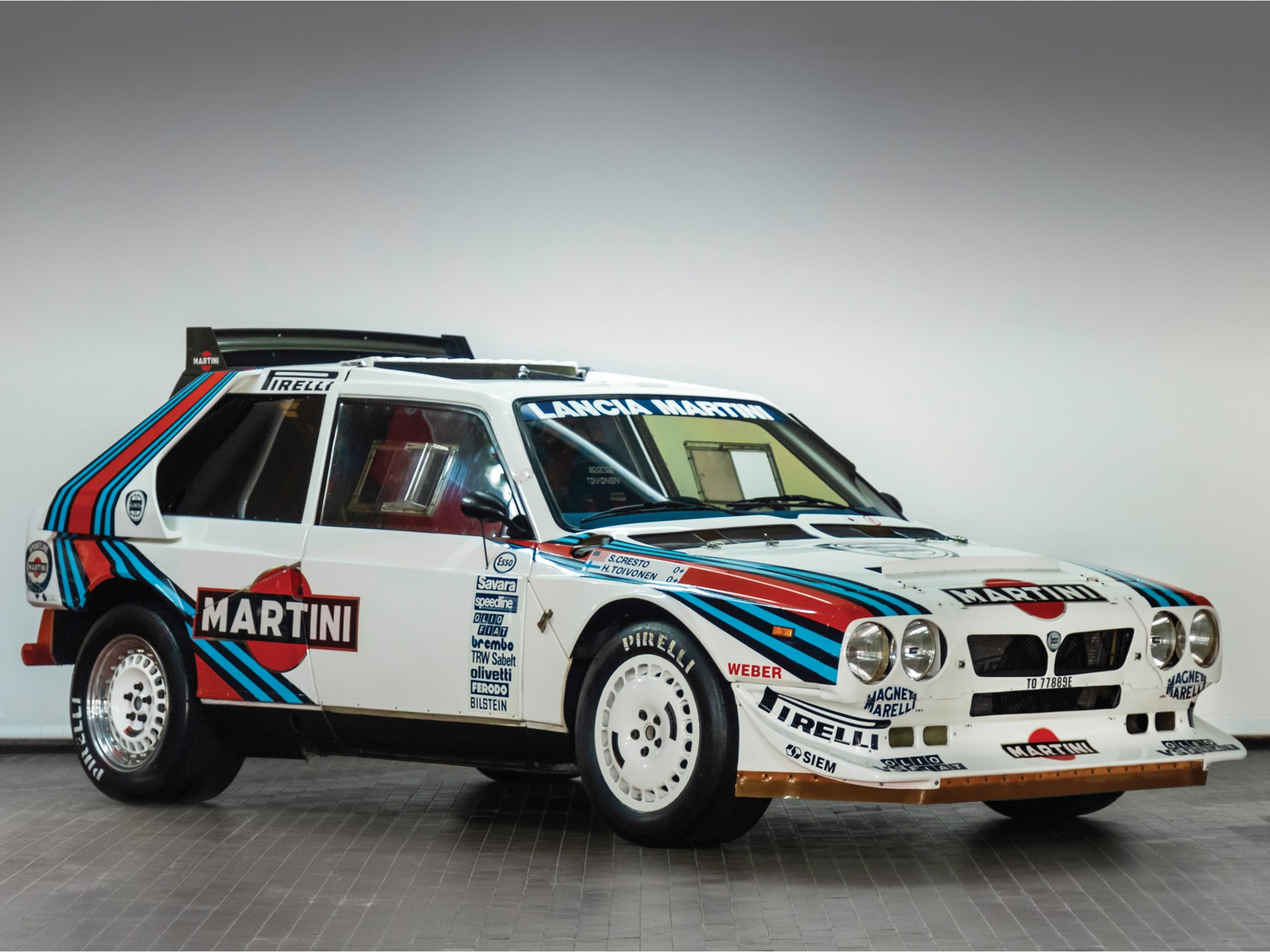
The Delta had been conceived in the late 1970s with two main goals: restore Lancia’s reputation of building quality cars with excellent road-holding in the middle market, and enter the hatchback segment popularized by the Volkswagen Golf. Tapping the designer of the Golf, Giorgetto Giugiaro, for the Delta was likely a major reason its look remained fresh from the time it debuted in 1979 until the last cars were constructed in 1994.
In 1982, the first clue of the Delta’s evolution (small E) appeared at the Turin Motor Show in the form of the Delta Turbo 4×4 concept. It featured a 1585-cc twin-cam inline-four, which was shared among other Fiat products, such as the Fiat 131 and Lancia Beta, and was designed by the former Ferrari engineer Aurelio Lampredi. The addition of a turbo allowed the engine to produce 130 hp. The 4×4 system was adapted to the front-wheel drive configuration based on the experience gained from the Fiat Panda 4×4. Some press were allowed to drive the car, but after that, it was mostly forgotten.
In 1986, however, the HF4WD followed through on the promise of the Delta Turbo 4×4. It featured a new all-wheel drive system with lessons learned from the Delta S4 Group B rally car. At the rear was a Torsen differential, the front differential remained open, and connecting the two was a Ferguson viscous-coupling center differential. The 1995-cc four-cylinder was rated at 165 hp.
The HF4WD was the car waiting in the showroom when Group A became the new feature category for 1987. Previously, only a few hundred road-going equivalents were necessary for homologating a rally car. Consequently, Lancia had indifferently built and sold road-going (stradale in Italian) versions of the Stratos (less than 500 produced), the 037 (only 207 built) and less than 200 of the Delta S4s. For the new Group A regulations, however, at least 5000 examples had to be produced in one year, making the new HF4WD the ideal entry.
A legend emerges—the Integrale
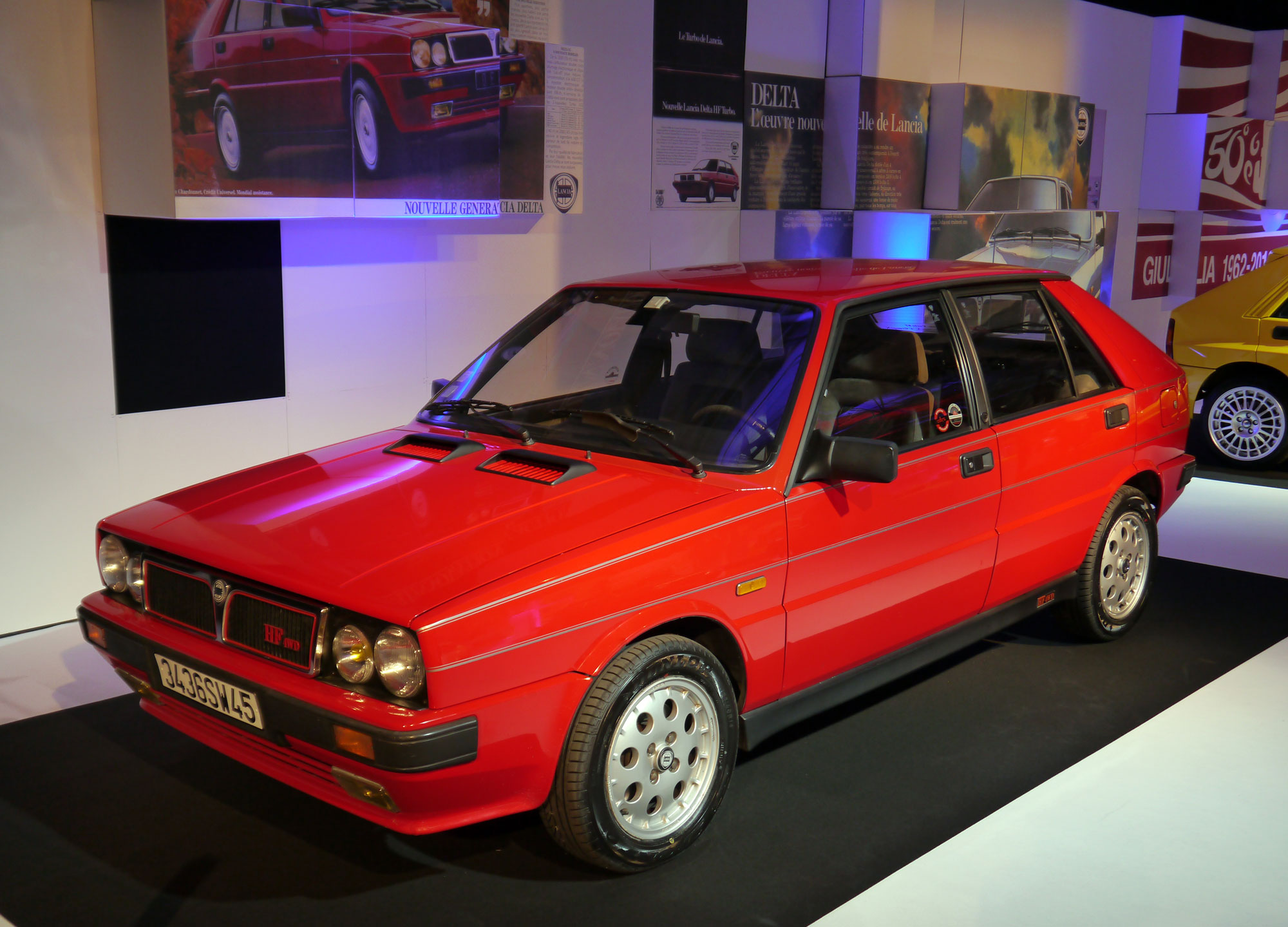
1987 was the first year of competition for the HF4WD, but it caught the competition sleeping, and it won eight out of 11 rounds of the World Rally Championship. The next year wasn’t going to be as easy, but Lancia introduced improvements that would become a familiar pattern: more under-hood airflow and more space for wider wheels and tires.
With the Delta HF integrale eight-valve car introduced in late 1987, changes included wider box fenders to fit larger wheels and more vents up front. Wheels went from 14×5 to 16×6, and tire sizes went from 185/60 VR 14 to 195/55 VR 15. Vents in the front bumper and near the leading edge of the hood were added. Power from the 1995-cc engine was up from 165 hp to 185 hp with the notable change being a larger Garrett T3 turbocharger. Torque split remained unchanged at 56 percent front and 44 percent rear.
Double the valves
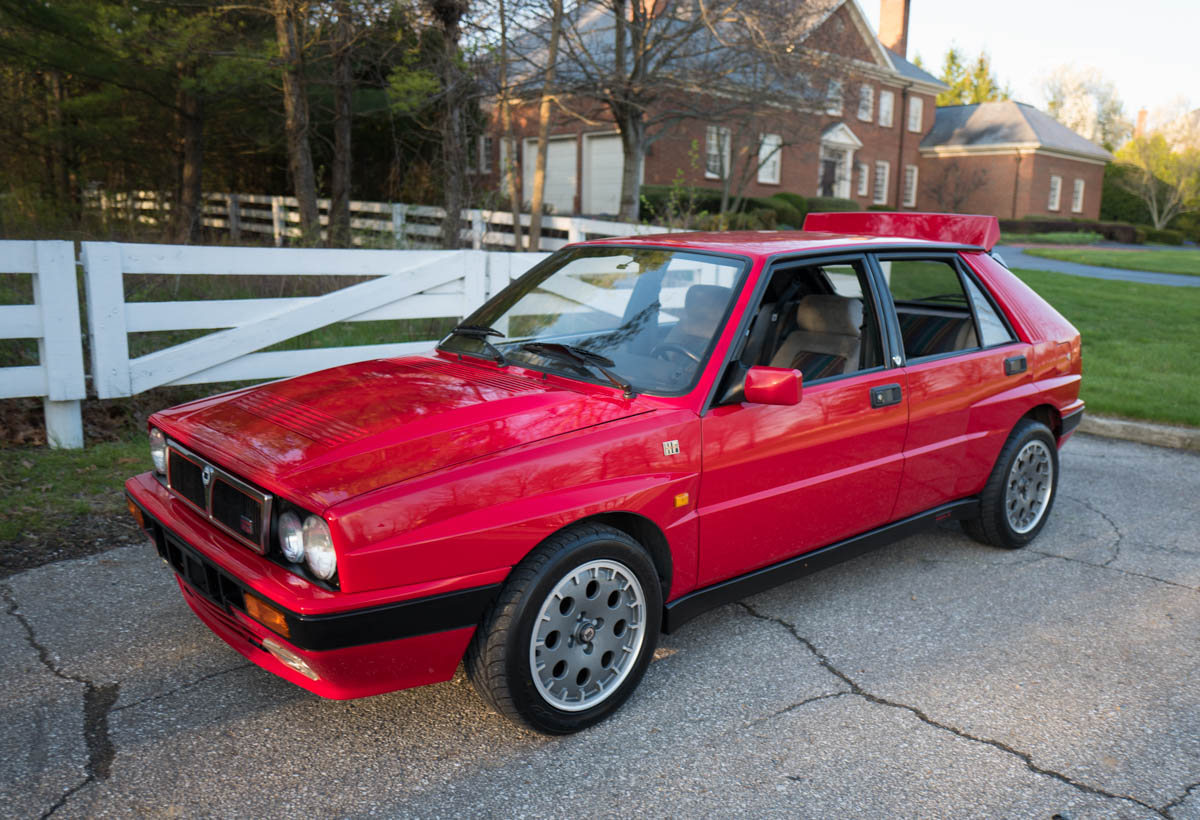
While the eight-valve car won the championship in 1988, and continued to win rallies into 1989, the new 16-valve Delta HF Integrale had already appeared. The new Integrale continued the streak of championship wins with the title in 1990 and 1991.
Externally, the most visible difference in the 16v is the hood bulge; however, the car also sits 20 mm lower. The additional valves helped increase power to 200 hp. The Marelli-Weber I.A.W. electronic injection (also found on the Ferrari F40, the Ford Sierra RS Cosworth, and the Escort RS Cosworth big-turbo) controlled ignition, fuel, the wastegate, and the new ABS. Torque split flipped from a front-biased 56/44 to a rear-biased 47/53. Wheels and tires increased in size to 205/50 VR 15s with rims now seven inches wide. The hood now sported two transverse vents: one at the same location as the eight-valve at the leading edge of the new hood bulge, and a new transverse vent along the trailing edge of the bulge.
Some European markets, such as Switzerland, had stricter emissions standards, which the new engine could not meet. Instead, these markets received an eight-valve version with 177 hp. These can be distinguished externally by a model badge with the “kat” suffix—for the catalytic converter.
Evoluzione
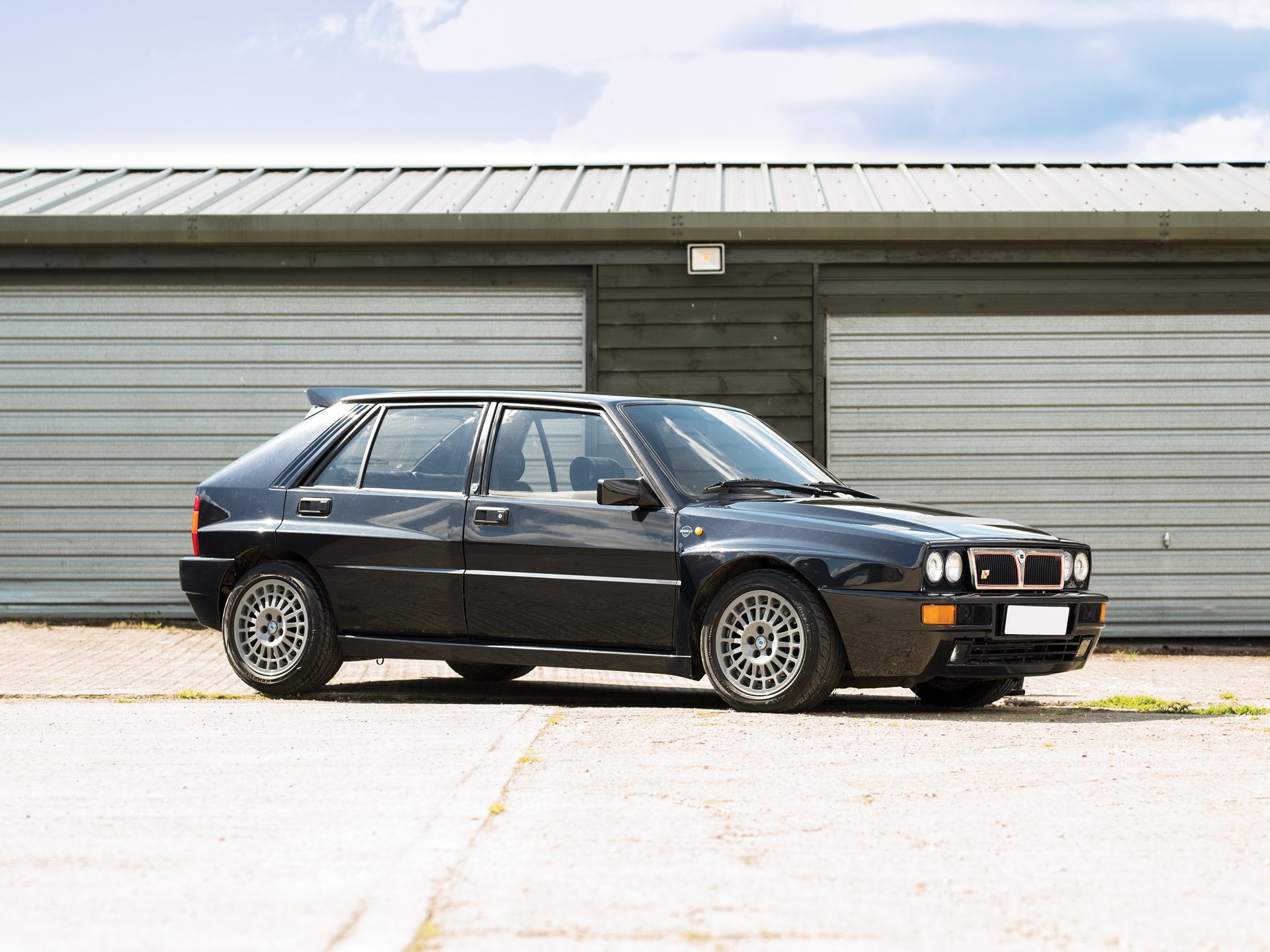
Introduced in late 1991, the Delta HF Integrale Evoluzione featured more of the same—wider bodywork to fit wider wheels and more vents for under-hood airflow. Two small vents appeared near the front corners of the hood and behind the front fender flares. Visually, the bumpers were now body-color, and the rear hatch gained an adjustable spoiler. Mechanically, power was up to 210 hp, as the diameter of the exhaust was increased from 54 mm to 60. Tires remained the same 205/50 VR 15s and wheels were still 15 inches, but now used five lugs and their width was increased half an inch to 7.5 inches. Torque split remained 47 percent front and 53 percent rear. Front track was increased by 76 mm, and at the rear, the increase was 94 mm. The motivation for the increases in track was for a tested but abandoned four-wheel steering system.
Despite Lancia having withdrawn from factory rallying after winning the championship in 1991, the independent Martini Jolly Club won in 1992 with the Evo.
Evo 2
Appearing in 1993, the update of the Delta HF Integrale Evoluzione featured a slight increase in power and additional handling and appearance tweaks. Power was up to 215 hp with a new ECU, and the previously black cam covers were now red. Wheels were increased to 16 inches, and tires were 205/45 ZR 16s. Externally, the roof rain gutter above the doors was now body color.
With the changes between the Evo and Evo 2 being so minor, it is not hard for someone to have made the earlier version look like the later version. When looking at an Evo 2, be sure it isn’t just a dressed-up earlier car.
Delta Integrale special editions
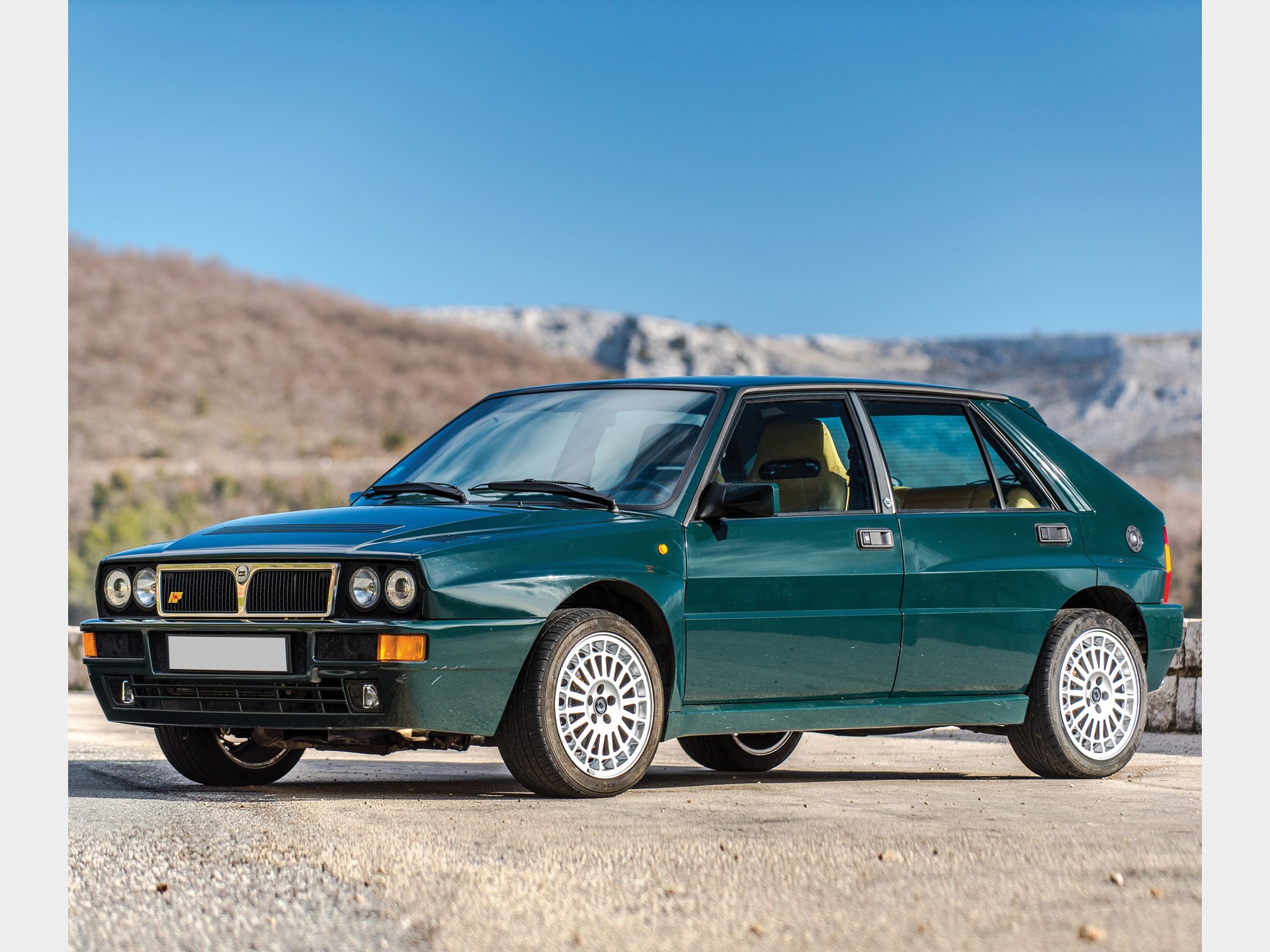
The Evoluzione versions of the car formed the basis for 12 special editions. The two common themes of the special editions are apparent: those that feature a non-standard color and those that celebrate the rally heritage of the car. Production numbers of the special editions range from a dozen to several hundred. Among the special colors special editions are the Verde York (602), Giallo (220), Giallo Ferrari (295), Blu Lagos (205), and Bianca Perla (370). Among the rally heritage cars are the Martini 5 (400) and Martini 6 (310), Dealers Collection (179), Club Italia (15), Lancia Club (8), HiFi (25), and Final Edition (250). Some special editions were based on the Evo 1, while others used the Evo 2 platform, and sometimes an Evo 1 variant was reintroduced in Evo 2 form.
Zagato turned 24 Evos into a two-door coupe called the Hyena. More were planned, but Fiat refused to supply Zagato with a bare chassis. One prototype was also constructed.
Several one-offs were done, too. While most just had unique paint, which sometimes later became a special edition, two stand out: a two-door silver Delta Cabriolet built for Gianni Agnelli, and the Viola “Evo 3” with 250 hp, 17-inch wheels, and revised front differential.
Similar to an Evo being made to look like an Evo 2, standard versions are often made to look like a special edition, so be sure you are looking at an authentic example. Special editions can be worth two to two-and-a-half times more than a standard car.
Owning a Lancia Delta Integrale
What’s it like to own and drive one? According to Marco Marini at Euro Classix Cars, an importer of Integrales, “I’ve had the good fortune of owning and selling over a dozen Integrales. Driving an Integrale is a unique and very satisfying experience. One that even the most tenured car experts gush about.”
While I won’t claim to be a tenured driving expert, my experience behind the wheel of a 16-valve car was a memorable. The way the car found traction at different wheels felt unique and more mechanical than the more modern all-wheel drive Audis, Subarus, and Volkswagens I have driven.
What to watch out for
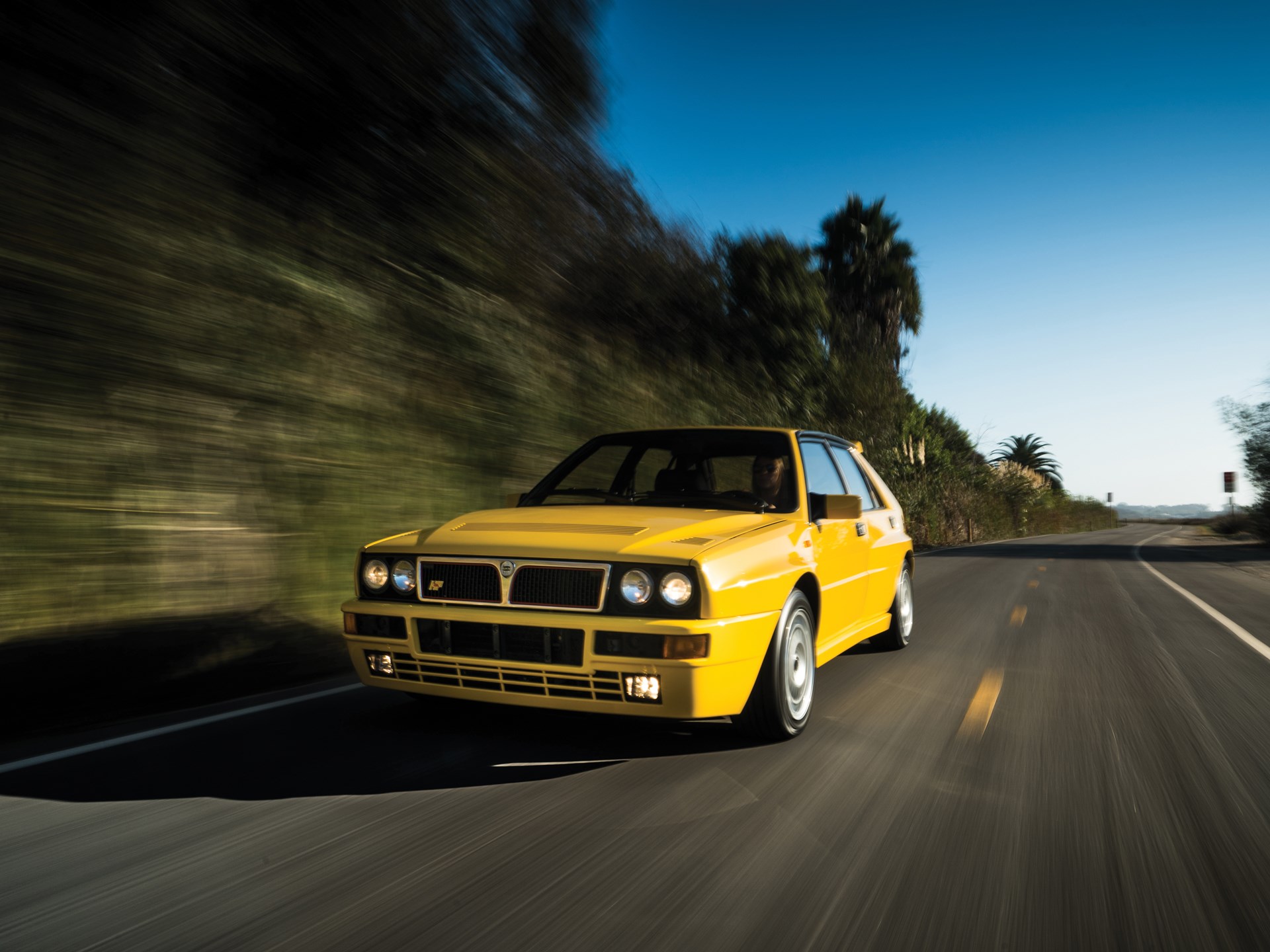
The qualities that made the Delta HF Integrale so successful when new, such as its extensive capabilities and advanced technology, has had a big impact on the market for them today. Because they were so capable and usable (with its five-door hatchback shape and all-wheel drive) but also accessible from a price and production number standpoint, many were driven hard and/or modified.
Mechanically, that advanced-for-the-time technology sometimes proves to be problematic today, but specialists (especially in the U.S.) are getting better at sorting problems. Common oil leaks include the upper sump gasket. The eight-valve engine will leak onto the exhaust manifold. The Garrett T34 turbo, found on the Evo 1, can leak from the seals. The cam shafts wear in 16-valve cars. Cam belts should be changed at around 20,000 to 30,000 km. Transmissions in good shape should not make a lot of noise. Third gear can be weak. Watch for performance chips or a disconnected overboost solenoid. Front brake hoses can crack, rear brakes can seize, and the rear brake compensator may require replacement.
When it comes to bodywork, Marco notes that “When looking to buy, the big things to avoid are rust, cracks in the A-pillars, and a car without solid service history.” If you’re uncomfortable looking for these things or unable to find a good example, he suggests potential buyers seek an expert.
Watch out for accident damage and or poor repairs. When it comes to rust, look for it on the tailgate beneath the window, the top of the hatch, and at the rear of the roof. It can also be found on the cowl below the windshield. The rigidity of the structure was never great, which is why stress cracks can develop at the A-pillars and sometimes the B-pillars—modified cars can be more prone to cracks. Underneath, check for corrosion at the front chassis spars and the rear cross member. Another weak point on Evos are the front anti-roll bar drop links, which are of poor quality and can fail prematurely. The vents on the hood can leak water into the engine bay, which can lead to the radiator support rusting.
Inside, the headliner can sag and the Alcantara-trimmed seat bolsters can wear quickly. Some fabric colors are also becoming hard to find. Badges (there are many) can delaminate and quality replacements can be hard to find.
The ECU of the car uses a system from Weber Marelli IAW, which was advanced for its time and also used on the Ferrari F40, but with age and haphazard attempts at performance tuning, will sometimes act up. Fortunately, specialists have stepped in and developed software tools to test and diagnose the ECU. Notably, the Evo 2 got a more advanced version, running at 8MHz (!) and double the memory.
As with most cars, be sure to look for one that has been maintained well and has good records.
Lancia Delta Integrale values
Over the past couple of years, the 25-year export limit in the U.S. has gradually made more and more of the Delta lineup eligible for private importation. As a result, values have increased over that time. As of May 2019, in the past five years, the condition #3 value for the Evo 1 has almost tripled from $19,000 to $56,000. Special editions that feature an unusual color can be worth twice as much as a standard car in equivalent condition. Those special editions that celebrate the rallying heritage can be worth 2.5 times or more. The market has been helped by auction companies such as RM Sotheby’s offering exceptional condition cars like this 1992 Lancia Delta HF Integrale Evoluzione Giallo Ferrari with just over 4000 miles that sold for $190,400 in late 2017, to Bring a Trailer offering good-condition examples like this 1993 Lancia Delta HF integrale Evo 2 with about 70,000 miles that sold for $66,150 in early 2019.
The upward trajectory of values for these cars has been Marco’s experience, too. “If you’re on the fence as to whether to buy one, prices have consistently been going up over the last 10 years and will continue to go up as solid, original, low mileage examples become harder to find,” he said. If you’ve got Italian taste for one of Group A’s finest, look no further.
Production Numbers
| All model years
|
|
| HF4WD | 5298 |
| 8-valve | 9841 |
| 16-valve | 12,860 |
| 8-valve catalytic converter | 2700 |
| Evo 1 and 2 | 13,597 |
| Total | 44,296 |
Links
Importers and expertise:
Parts:
http://www.walkers-garage.co.uk/
http://www.forzavx.com/gecu/index.html
Forum:
http://forums.delphiforums.com/evoforum/
Sources
Collins, Peter. Lancia Delta Integrale. Dorchester: Veloce Publishing Limited, 2017.
Trow, Nigel. Lancia The Shield and Flag. North Pomfret: David & Charles Inc., 1980.
Lancia Delta, Wikipedia, 2 May 2019, https://en.wikipedia.org/wiki/Lancia_Delta
